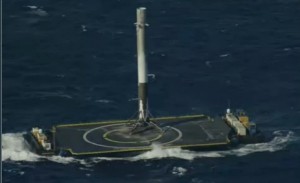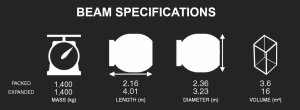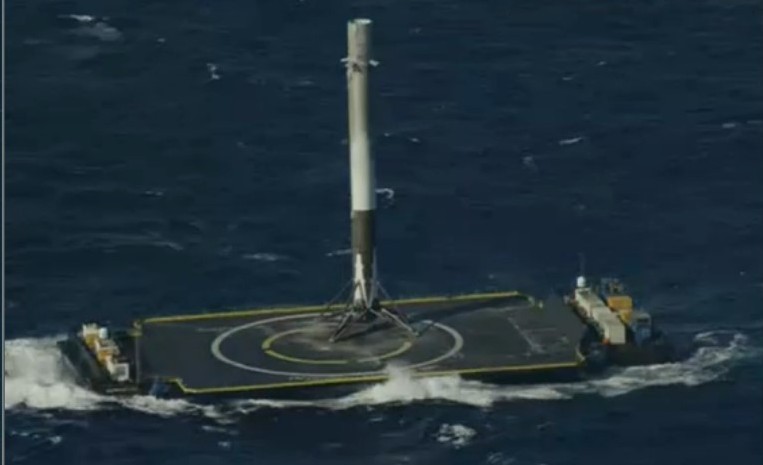SpaceX, a non-government-funded organization that designs, builds, and launches space shuttles, has just landed a portion of a recently launched shuttle on a drone ship in the Atlantic Ocean.
PNN Reporters Julia Fisher and Brandon King took a brief pause from their spring breaks to attempt to capture some footage of the rocket, but to no avail — most likely because their vantage points of eastern South Carolina and Northern Florida were too far away from the launch site in Cape Canaveral, southern Florida.
However, despite PNN’s lack of firsthand footage, the mission proceeded as planned. The two parts of the launched shuttle are the Dragon, which will dock at the International Space Station in about 2 days, and the Falcon 9, a rocket base that propelled the Dragon into orbit. This is the third launch of the Falcon this year, and the 11th overall launch of the Dragon.
There are two unique parts to this mission. The first is the landing a portion of the Falcon on the drone ship “Of Course I Still Love You” in the Atlantic Ocean (so named because of four previous failed attempts that damaged the ship). The first stage of the Falcon successfully landed on the ship at 3:51:36pm.
 This is a monumental advancement in space travel, as it allows SpaceX to reuse portions of spacecraft. SpaceX describes on its website that one of its “key goals— [is] developing reusable rockets, a feat that will transform space exploration by delivering highly reliable vehicles at radically reduced costs.” This successful landing is certainly a huge first step to achieving that goal.
This is a monumental advancement in space travel, as it allows SpaceX to reuse portions of spacecraft. SpaceX describes on its website that one of its “key goals— [is] developing reusable rockets, a feat that will transform space exploration by delivering highly reliable vehicles at radically reduced costs.” This successful landing is certainly a huge first step to achieving that goal.
The second unique part to this mission is the delivery of the BEAM: the Bigelow Expandable Activity Module. According to NASA, “BEAM will arrive in Dragon’s unpressurized trunk and, after about five days, will be removed and attached to the [International Space] station… The module will expand to roughly 10 feet in diameter and 13 feet long.”
 BEAM is an expandable habitat. It essentially works like an inflatable bouncy house — it can be transported in its deflated state, then inflated to provide a larger environment for living and working. “Expandable habitats are designed to take up less room on a rocket, but provide greater volume for living and working in space once expanded. This first… test of the module will allow investigators to gauge how well the habitat protects against solar radiation, space debris and contamination,” says NASA on their website. The BEAM is set to be expanded during the month of May.
BEAM is an expandable habitat. It essentially works like an inflatable bouncy house — it can be transported in its deflated state, then inflated to provide a larger environment for living and working. “Expandable habitats are designed to take up less room on a rocket, but provide greater volume for living and working in space once expanded. This first… test of the module will allow investigators to gauge how well the habitat protects against solar radiation, space debris and contamination,” says NASA on their website. The BEAM is set to be expanded during the month of May.
The mission is still ongoing. The Dragon spacecraft is presently traveling at thousands of kilometers per hour towards the International Space Station. According to a press release by SpaceX, “About two days after launch, International Space Station crew members will use the station’s 57.7-foot (17.6-meter) robotic arm to reach out and capture the Dragon spacecraft and attach it to the station.” After unloading the BEAM and staying docked for about a month, the Dragon will reenter the Earth’s atmosphere and land in the Pacific Ocean off the coast of California.
SpaceX broadcast a livestream of the launch on their website and on YouTube, which can be seen here. (The countdown to launch begins at 27:19.) For more information, visit spacex.com. You can also find more information about the BEAM at its official site.

